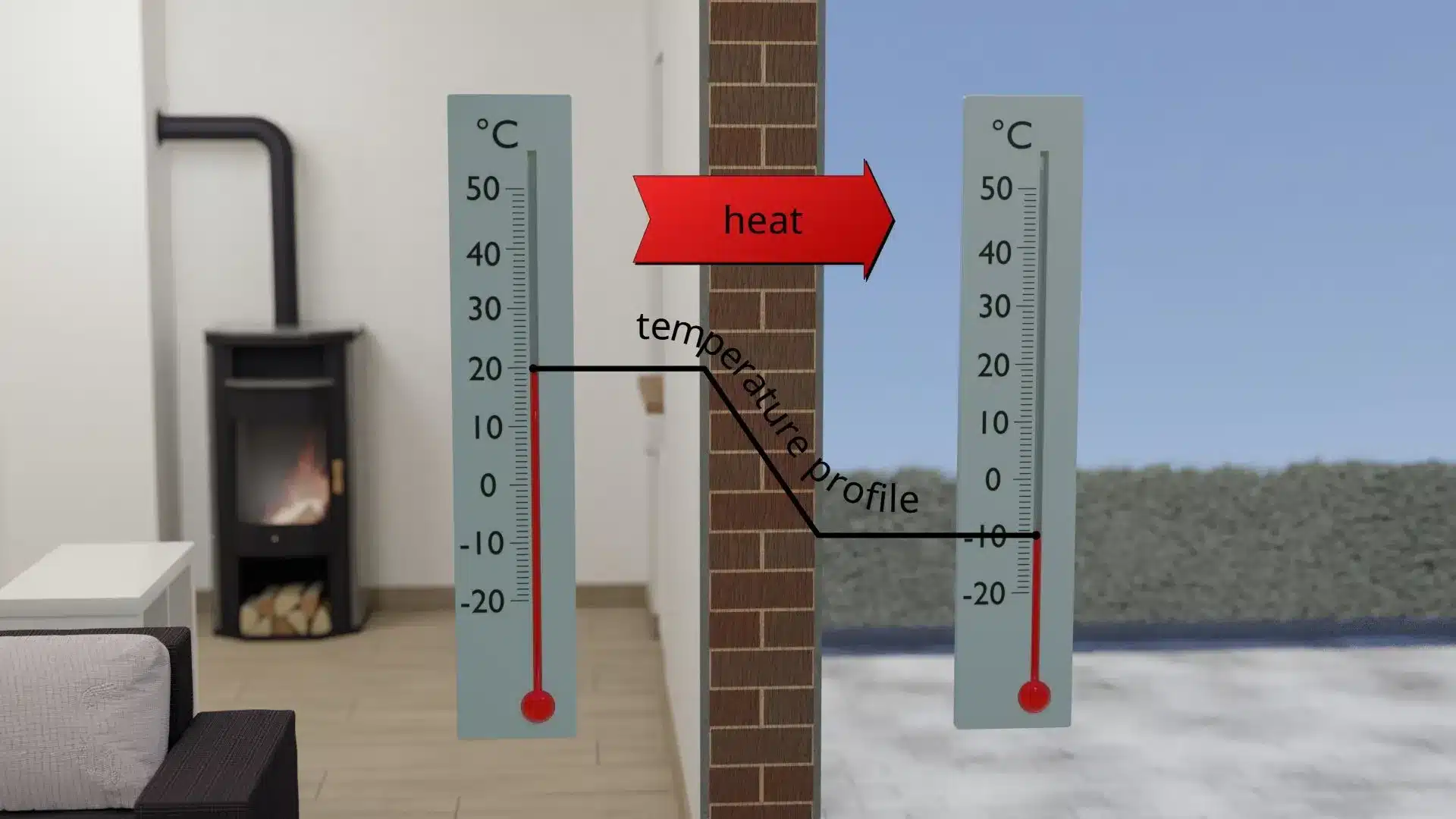About Fourier’s Law
- Fourier’s law, or Law of Heat Conduction, describes how heat is transferred, or conducted, through solid materials.
- As molecules vibrate and electrons shuttle about, the heat diffuses from the hotter end of an object to the colder end.
- It states that the rate of heat conduction through a plane layer is proportional to the temperature gradient across the layer and the heat transfer area of the layer.
- Basically, it is an empirical relation between the rate of heat conduction, heat transfer, and temperature gradient in the direction of heat flow.
- Formula: q = – k▽T, where,
- q is the heat flux, which is expressed as energy per unit area per unit time.
- k is the heat conductivity coefficient (thermal conductivity). The dimension is area per unit time, so typical units for expressing it would be m2/s.
- ∇T is the temperature gradient (K/m).
- The thermal conductivity of the material (k) is also known as the proportionality constant that is obtained in the formula. A high value of k denotes that the material is a good thermal conductor, and easily transfers energy through it.
What is Conduction?
- Conduction is one of the three main ways that heat energy moves from place to place. The other two ways heat moves around are radiation and convection.
- Conduction is the process by which heat energy is transmitted through collisions between neighboring atoms or molecules.
- Conduction occurs more readily in solids and liquids, where the particles are closer together, than in gases, where particles are further apart.
- Anything that involves direct physical contact to transfer heat is an example of conduction.
Q1) What is convection?
Convection is a mode of heat transfer that occurs when heat is carried through a fluid (liquid or gas) due to its movement.In free convection, air or water moves away from the heated body as the warm air or water rises and is replaced by a cooler parcel of air or water. In forced convection, air or water is forcibly moved across the body surface (such as in wind or wind-generated water currents) and efficiently removes heat from the body.
Source: Startling Exception Discovered to 200-Year-Old Law of Physics
Last updated on December, 2025
→ Check out the latest UPSC Syllabus 2026 here.
→ Join Vajiram & Ravi’s Interview Guidance Programme for expert help to crack your final UPSC stage.
→ UPSC Mains Result 2025 is now out.
→ UPSC Notification 2026 is scheduled to be released on January 14, 2026.
→ UPSC Calendar 2026 is released on 15th May, 2025.
→ The UPSC Vacancy 2025 were released 1129, out of which 979 were for UPSC CSE and remaining 150 are for UPSC IFoS.
→ UPSC Prelims 2026 will be conducted on 24th May, 2026 & UPSC Mains 2026 will be conducted on 21st August 2026.
→ The UPSC Selection Process is of 3 stages-Prelims, Mains and Interview.
→ UPSC Result 2024 is released with latest UPSC Marksheet 2024. Check Now!
→ UPSC Prelims Result 2025 is out now for the CSE held on 25 May 2025.
→ UPSC Toppers List 2024 is released now. Shakti Dubey is UPSC AIR 1 2024 Topper.
→ UPSC Prelims Question Paper 2025 and Unofficial Prelims Answer Key 2025 are available now.
→ UPSC Mains Question Paper 2025 is out for Essay, GS 1, 2, 3 & GS 4.
→ UPSC Mains Indian Language Question Paper 2025 is now out.
→ UPSC Mains Optional Question Paper 2025 is now out.
→ Also check Best IAS Coaching in Delhi

















